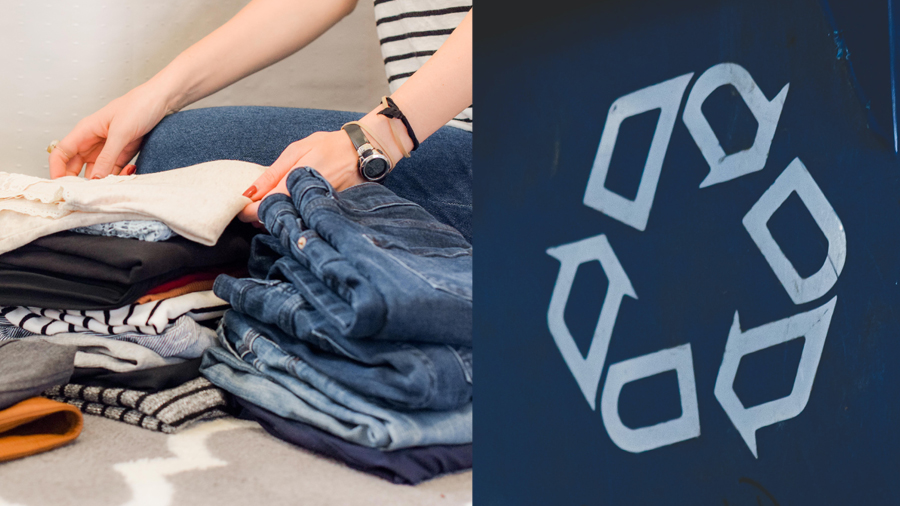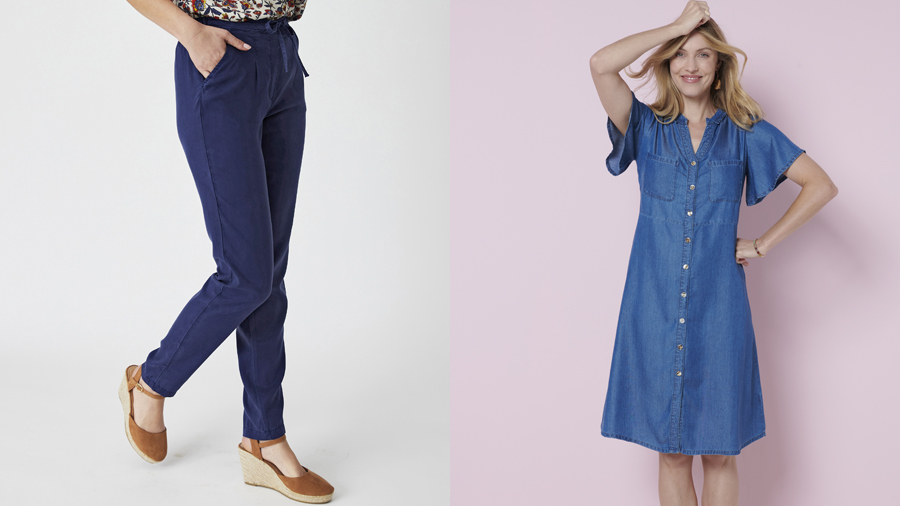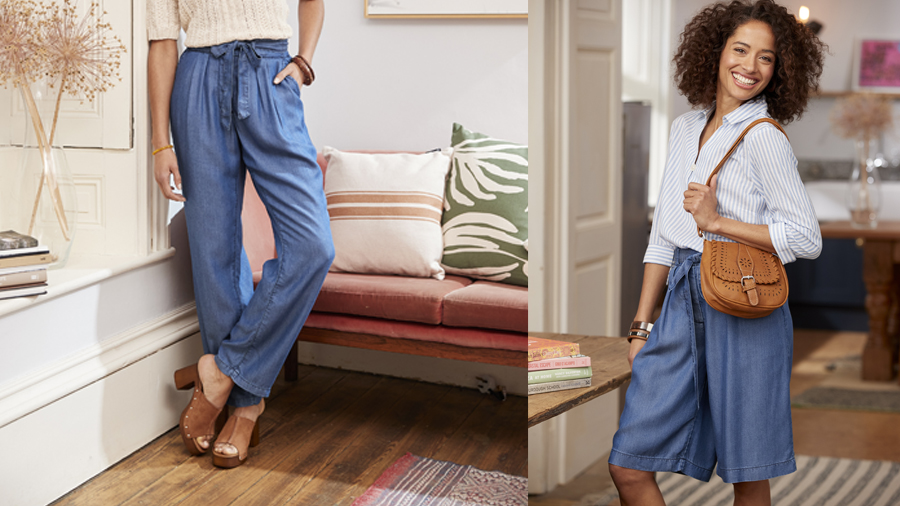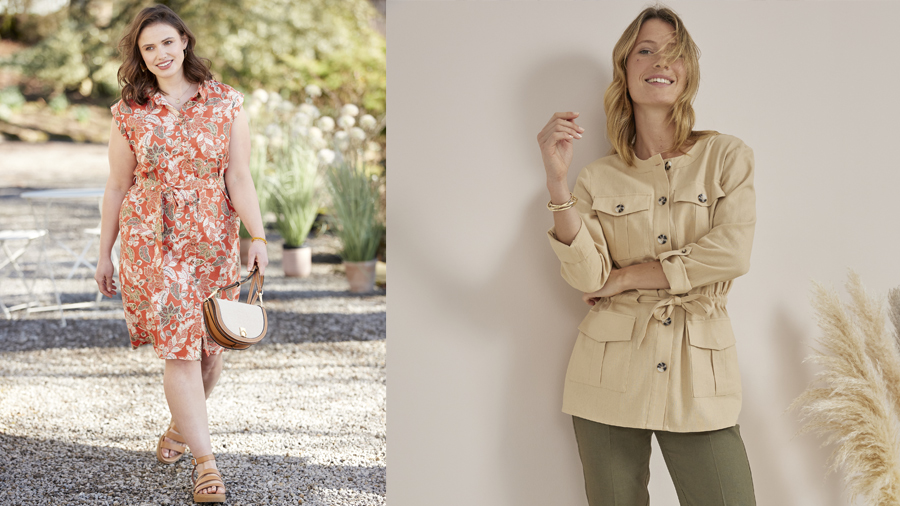When we decide to buy new clothes, there are many elements that we will often take into consideration such as the size, fit, colour and price of the items. But how many of us consider how sustainably made our clothing choices are?
Here at Damart we were curious to find out just how sustainably minded UK shoppers are (particularly when it comes to buying clothes), and so we polled 2,000 UK adults on:
- their approach to shopping for more eco-friendly clothes
- if and how sustainability impacts their buying choices
- If and how they get rid of the items of clothing that they no longer wear.
This gave us data (on a national and city-by-city level) on…
- The percentage of residents that sold old clothing online in the last six months
- The percentage of residents that recycled old clothing via recycling banks in the last six months
- The percentage of residents that made use of instore recycling schemes in the last six months
- The average number of clothing items per resident that are no longer worn
- The average number of new clothing items per resident that are new, unworn, with no plans to wear
- The percentage of residents who say that sustainability plays a role in their fashion shopping habits (at least 50% of the time)
We also looked into the ratio of people to charity shops in the local area and the ratio of people to recycling banks in the local area

When shopping, sustainability is currently not a priority for the majority
Fashion retail is booming here in the UK, with our study showing that UK consumers are spending an average of £415.18 per year on new items of clothing alone. This equates to a total of more than £21billion* being forked out every single year on refreshing our wardrobes. But how much of this is going to sustainable items?
Well, when it comes to buying new items of clothing, more than half of British consumers (55%) admit they never take sustainability into consideration when clothes shopping.
One in five (20%) stated that when shopping, they try to think a little bit about sustainability but do not do this all the time, while a further one in ten (9%) Brits try to shop in a ‘greener’ way but struggle to find sustainable clothing that they like.
Our research highlighted that women are usually more sustainably minded when shopping for new clothes, as half (51%) said that they take sustainability into consideration when shopping, versus two in five (40%) men who think about this when buying a new outfit.
On average women are also marginally bigger spenders when it comes to their wardrobe, with their average yearly spend coming to £419. Admittedly, men were not far behind them though, spending on average £412 each year on new clothes.
Interestingly, 1.3 million** UK women admitted to spending £901-1,000 on clothes each year.
Keep, Donate, Recycle?
Although sustainability isn’t our main focus when filling our wardrobes, Brits do seem to be more eco-minded when getting rid of old or unworn garments.
First and foremost, it seems Brits are a rather charitable bunch, with a whopping nine out of ten UK adults (91%) sharing with us that they regularly donate their clothing to charity, making it the most popular way for people to get rid of their old clothes.

Additionally, almost half (48%) donate clothes every six months, while more than a quarter (28%) of us are even donating as frequently as every three months.
The second most popular method of clothing disposal was found to be recycling with eight out of ten (79%) UK consumers claiming to use their local recycling banks. More than a third (38%) stated they head to their recycling banks at least every six months.
Our survey also revealed that we also love to give to our nearest and dearest, with more than two thirds (72%) of Brits donating clothing items to friends and family, with half of those who do so (35%) giving items away on a regular basis (at least every six months).
Naturally, with the rise of reselling platforms such as eBay and Depop, many of those surveyed are also making a little bit of extra cash by selling their old clothes rather than donating them. In fact, more than half (54%) of those we polled have previously sold their clothing items online resale apps. However, despite the monetary reward, just one in ten (10%) were found to be doing so regularly; every 6-12 months.
Equally, despite the introduction of numerous incentive-led, in-store recycling schemes in many UK fashion retailers in recent years, just half (50%) of Brits have ever made use of one of these.
The data showed that women have more experience shifting their old clothes than men, as over half (56%) of men have never sold their old clothes online (versus 37% of women). A quarter (25%) of men have also never recycled old clothes, compared to 17% of women, and 14% of men have never donated their old clothes to charity (versus just 4% of women).
In with the old, in with the new
However, whilst we are making a dent in our wardrobes by getting rid of some of our old, unwanted clothes, it seems there are some items Brits just can’t bring themselves to part with just yet.
More than two thirds (72%) of consumers polled admitted to holding onto items of clothing they no longer wear, with an average of nine pieces of unworn clothing taking up space in UK wardrobes. This would equate to a staggering 476 million unworn items sitting in wardrobes across the country***.

Shockingly, one in ten (10%) UK adults estimate that they’re holding onto 11-15 items that they no longer wear.
But not everyone is hoarding unwanted items, as a fifth (21%) of men state that they only keep what they wear, which is more than twice the number of women (8%) who do this.
Which city makes the most eco-friendly fashion choices?
When it comes to fashion choices, some of us are clearly more sustainably minded than others. But which city is overall the best for sustainable clothing decisions?
After analysing all our data, Norwich was crowned the UK city where residents are making the most sustainable fashion choices, boasting an overall score of 69/100. The city claimed the top spot thanks to factors such as it having just 2,424 residents per charity shop within five miles of the city centre, 3,429 residents per recycling bank within five miles of the city centre, and the average person here owning just nine used and three new pieces of clothing that are no longer worn.
The Top 10 UK Cities Making the Most Sustainable Fashion Choices in 2022
1. Norwich (69/100)
2. Stoke-on-Trent (68/100)
3. Newcastle (67/100)
4. Newport (67/100)
5. Leicester (66/100)
6. Southampton (62/100)
7. Oxford (62/100)
8. Belfast (60/100)
9. Plymouth (60/100)
10. Coventry (60/100)
Joining Norwich at the top was Stoke on Trent (68/100), Newcastle (67/100), Newport (67/100), and Leicester (66%).
Newport residents were found to be the lowest spenders on new clothing of all the 32 major UK cities we analysed, splashing out just £213.96 per year on new additions to their wardrobe, almost half the national average.

At the opposite end of the scale, Nottingham was found to be the city with the biggest room for improvement when it came to sustainable fashion choices, with the city scoring just 25 out of a possible hundred points.
Those in Nottingham face challenges such as a high ratio of 6,887 people per charity shop (within 5 miles of the city centre) and 29,199 people per recycling bank (within 5 miles of the city centre). Additionally, just four percent of residents here shared that sustainability plays a role in their shopping choices for at least half of their annual purchases.
Swansea (34/100), Bradford (36/100), Milton Keynes (39/100), Liverpool and Aberdeen (both 40/100), all joined Nottingham at the bottom end of the table.
Conclusion: Tips for Sustainable Shopping
Whilst there is still a long way to go when it comes to thinking about more sustainable fashion choices, it’s encouraging to see that there are a large number of people who already prioritise this when buying new clothes, and many of us opt to get rid of our unneeded garments in a ‘green’ way too.

For those that would like to take sustainability into account when shopping, we recommend looking for brands with sustainable collections as more businesses have dedicated ranges focused on this. You should also consider shopping for clothes that are made from sustainable fabrics, for example organic or recycled cotton.

Recycled cotton is the most sustainable way to wear the material, as it uses less water and energy to produce than conventional cotton. Organic hemp and organic linen are also more sustainable materials that you can look for if you’re choosing to prioritise sustainability when shopping. Other more sustainable materials include tencel/lyocell, econyl, and recycled polyester (rPET).
At Damart, we’re proud to say we’re taking positive steps to ensure we have sustainable options more readily available for our customers. Our Regeneration range, for example, is a hand-picked selection of beautiful pieces made from recycled materials, and they don’t cost the earth.

Another way to take your sustainable clothing choices to another level is to opt for a capsule wardrobe.

A capsule wardrobe consists of a smaller, more curated selection of clothes – this means when buying any new item, you would take into consideration whether it matches the clothes you already own and choose to invest in staple, high-quality garments.
Tips on creating a capsule wardrobe
1. Define your style
Think of the items you already own, why do you love them? What do you reach for most? What outfits do you feel your best in? Do the clothes that you have fit your current lifestyle and habits?
2. Choose your colour palette
When starting a capsule wardrobe, it’s helpful to pick a base colour for your wardrobe, such as black, white, navy, brown to buy for your clothes. After this, you then pick some accent colours that work with your chosen base colour. This will mean when you’re deciding on an outfit, you already know that your wardrobe all goes together and picking outfits will be less time-consuming and stressful.
3. Prioritise versatile items
When choosing items, think of staples that can be worn throughout the year, such as jeans and shirts, and then add in seasonal pieces such as summer dresses or knitwear. Remember that layering different pieces can create an entirely new outfit.

4. Decide what works for you
As a general rule, it’s a good idea to invest in some basic t-shirts or vests, some shirts, two jumpers or cardigans, a good pair of jeans, another pair of trousers (with the option of wearing these in a formal setting), some versatile dresses, a couple of jackets and then a coat suitable for colder weather.

However, this can be adapted to each person’s preferences. Some will want to have more tank or vest tops, whereas other people may prioritise long sleeves. Some may choose to invest in more formalwear over casual clothing. Consider your lifestyle when thinking about the items you would want to invest in.
5. Think of how your entire wardrobe goes together
When buying a new item, it’s important to think about how it works in your capsule wardrobe. Will you be able to pair it with multiple garments that you already have? Can you picture yourself wearing it on multiple occasions, and creating a variety of outfits with it?
Of course, a capsule wardrobe may not be for everyone, but can be a great way to introduce more sustainable thinking for those who want to be more environmentally minded.
Our Research sources
* UK adult population = 52,890,044 52,890,044 x 415.18 = 21,958,888,467.92 https://www.ons.gov.uk/peoplepopulationandcommunity/populationandmigration/populationestimates/articles/overviewoftheukpopulation/january2021
** UK female population = 33,818,578 4% of 33,818,578 = 1,352,743 https://www.ons.gov.uk/peoplepopulationandcommunity/populationandmigration/populationestimates/articles/overviewoftheukpopulation/january2021
*** UK adult population = 52,890,044 52,890,044 x 9 = 476,010,396 https://www.ons.gov.uk/peoplepopulationandcommunity/populationandmigration/populationestimates/articles/overviewoftheukpopulation/january2021
- To determine the table of rankings, Damart compared data for 32 major UK cities, taking in to account the average population size for each city according to the latest ONS data, and awarded a number of points based on the following factors:
The ratio of people to charity shops in the local area – https://www.yell.com/
The ratio of people to recycling banks in the local area – https://www.recyclenow.com/recycle-an-item/clothing-textiles
The percentage of residents that within the last 6 months sold old clothing online – taken from a national survey of 2,000 UK adults, correct as of 22/3/2022
The percentage of residents that within the last 6 months recycled old clothing via recycling banks – taken from a national survey of 2,000 UK adults, correct as of 22/3/2022
The percentage of residents that within the last 6 month made use of instore recycling schemes – taken from a national survey of 2,000 UK adults, correct as of 22/3/2022

